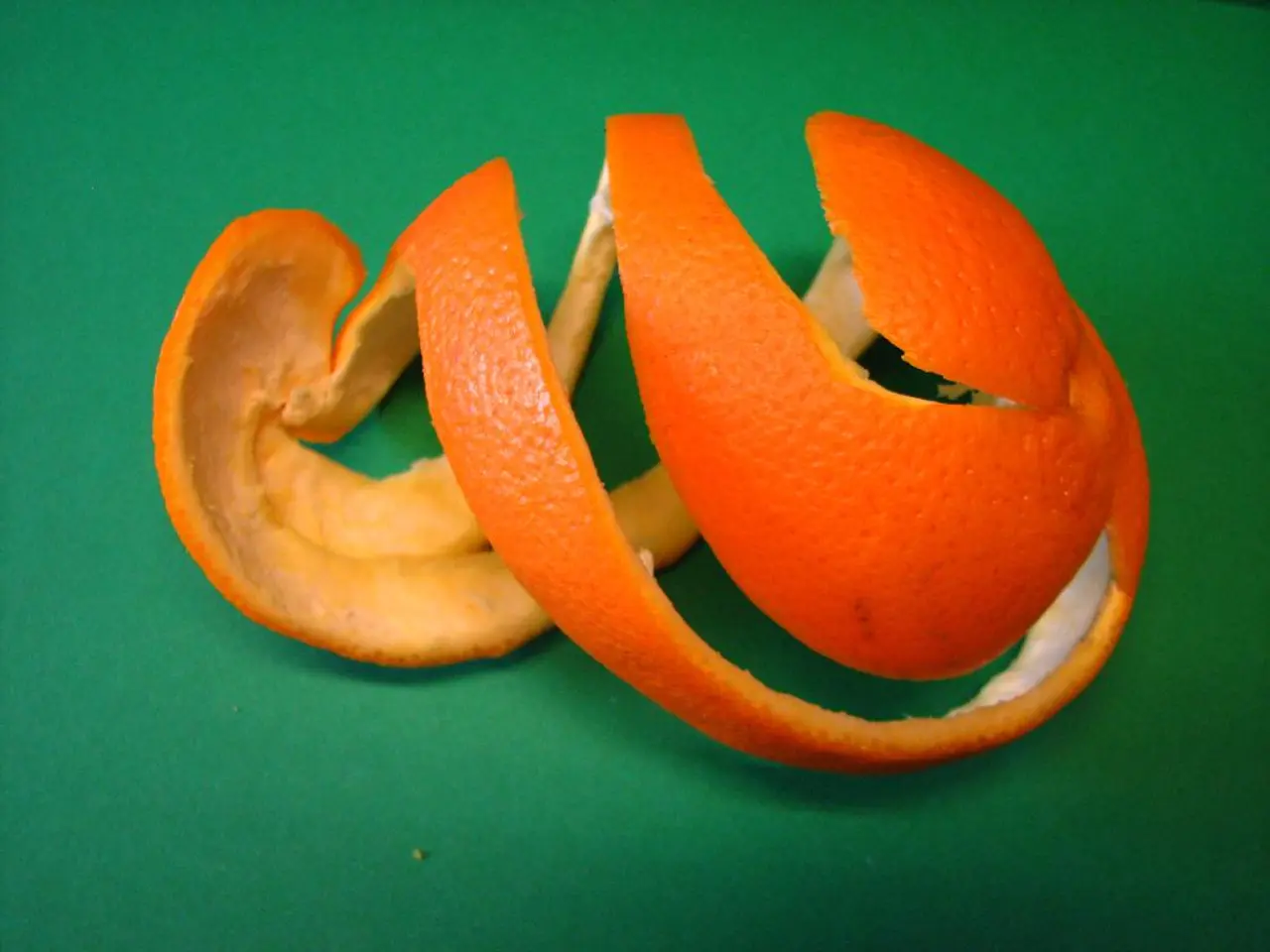Skin Care Ingredient Analysis: Mandelic Acid, its properties, benefits, and additional details
Mandelic acid chemical peels have gained popularity in the skincare world due to their mild yet effective properties. These peels, known as superficial peels, do not penetrate deeply into the skin, making them a preferred choice for those seeking rejuvenation with minimal irritation and low risk of pigmentation.
Brands such as Divine Derriere and Platinum Skin Care offer mandelic acid peels with proven results. These peels are particularly beneficial for individuals with acne, pigmentation issues, fine lines, wrinkles, and rosacea. The antibacterial, anti-inflammatory, and melanin-inhibiting properties of mandelic acid make it an effective treatment for these conditions.
In comparison, glycolic acid peels provide dramatic improvement in skin texture and anti-aging but with a higher risk of irritation and pigmentation changes, especially in sensitive or darker skin types. Lactic acid, another alpha hydroxy acid, is generally milder but less discussed. Salicylic acid peels, a beta hydroxy acid, are particularly effective for acne and oily skin, penetrating pores deeply to reduce acne lesions. However, they may cause mild dryness and itching.
TCA peels, known as the "gold standard" peels, are used for a wide range of issues including wrinkles, pigmentation, texture, and scars. However, they require careful skin preconditioning to avoid post-inflammatory hyperpigmentation, especially in darker skin tones, and involve more downtime and risk compared to mandelic acid peels.
Safety and Side Effects
Mandelic acid peels cause minimal visible peeling with little to no downtime, mainly slight dryness. They are safe for all skin types, including darker skins prone to pigmentation issues. Salicylic acid peels can cause mild dryness, itching, redness, or burning symptoms which usually subside without intervention. Other AHA peels like glycolic acid or TCA may cause more discomfort, redness, peeling, and a higher chance of post-inflammatory hyperpigmentation without proper pre- and post-care.
Summary Table
| Acid Peel Type | Primary Uses | Effects | Safety/Side Effects | Skin Type Suitability | |--------------------|------------------------------------|---------------------------------|--------------------------------------------------|--------------------------------| | Mandelic Acid | Acne, pigmentation, anti-aging, rosacea | Gentler peel, light/no peeling | Minimal irritation/dryness; low hyperpigmentation risk | All skin types, especially darker skins | | Glycolic Acid | Anti-aging, texture improvement | Stronger exfoliation; visible peeling | Higher irritation and pigmentation risk | Mostly lighter skin types | | Lactic Acid | Mild exfoliation, hydration | Gentle peeling | Mild irritation | Sensitive skin types | | Salicylic Acid | Acne, oily skin, scars | Penetrates pores, reduces lesions | Mild dryness, itching, redness | Oily/acne-prone skin | | TCA (Trichloroacetic Acid) | Wrinkles, scars, pigmentation | Medium depth peel; significant exfoliation | Higher risk of pigmentation, redness, downtime | All skin types with caution in darker types |
In conclusion, mandelic acid peels are a preferred choice for individuals seeking effective skin rejuvenation and acne treatment with minimal irritation and low risk of pigmentation, especially suitable for sensitive or darker skin types. Other peels like glycolic or TCA may offer stronger results but with increased risk and downtime.
A 12-week-long acid-based chemical peeling program showed approximate reductions in acne scores of 74% for a combined salicylic acid and mandelic acid peel. It is important to follow instructions carefully and heed safety warnings when applying a chemical peel. Mandelic acid chemical peels may be as effective as salicylic acid chemical peels for treating acne.
Remember, mandelic acid may cause eye irritation or damage if it gets in the eye. Always ensure to take necessary precautions and consult a dermatologist if you have any concerns. Other products containing mandelic acid include exfoliants and cleansers. The side effects and downtime after mandelic acid peels are generally less than other peels, allowing for more frequent "touch-ups" and shorter intervals between peel sessions.
Sources: 1. The Journal of Clinical and Aesthetic Dermatology 2. The Journal of Drugs in Dermatology 3. The Journal of Cosmetic Dermatology 4. The Journal of Drugs in Dermatology 5. The Journal of Clinical and Aesthetic Dermatology
- Mandelic acid peels, known for their mild but effective properties, are particularly beneficial for individuals with acne, pigmentation issues, fine lines, wrinkles, and rosacea, due to its antibacterial, anti-inflammatory, and melanin-inhibiting properties.
- Mandelic acid peels cause minimal visible peeling with little to no downtime, mainly slight dryness, making them safe for all skin types, including darker skins prone to pigmentation issues.
- In comparison, other alpha hydroxy acids like glycolic acid or TCA may cause more discomfort, redness, peeling, and a higher chance of post-inflammatory hyperpigmentation without proper pre- and post-care.
- A 12-week-long acid-based chemical peeling program showed approximate reductions in acne scores of 74% for a combined salicylic acid and mandelic acid peel, suggesting that mandelic acid chemical peels may be as effective as salicylic acid chemical peels for treating acne.




